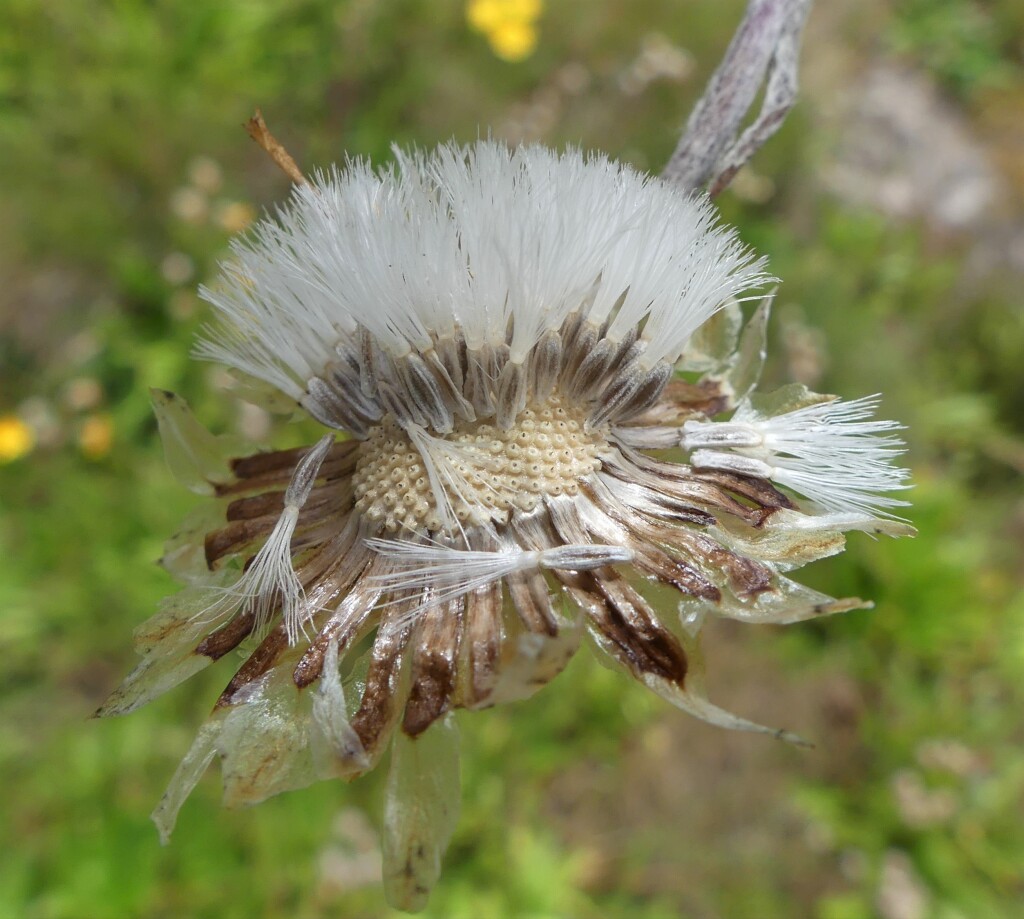Podolepis robusta
(Maiden & Betche) J.H.Willis Alpine PodolepisErect perennial herb, 20–60 cm high; stem single, unbranched, usually densely woolly, sometimes glabrescent towards base. Leaves glabrous and bright green; basal ones oblong to spathulate, to 20 cm long and 45 mm wide; cauline leaves oblong to narrow-elliptic, mostly 5–15 cm long, 5–25 mm wide, acute to acuminate. Capitula hemispherical, mostly 20–35 mm diam., 5–11 in dense cymes; peduncles 2–15 cm long; involucral bracts ovate, obtuse, scarious, smooth, shiny; intermediate bracts 8–13 mm long, with linear glandular claw c. as long as lamina; inner involucral bracts long-clawed. Florets bright yellow to orange; ligulate florets 30–40, 9–13 mm long, with 3–5 apical teeth to 2 mm long; disc florets numerous. Cypselas 2.5–3.5 mm long; pappus bristles 30–40, shortly connate, 4–8 mm long. Flowers Dec.–Mar.
HSF, HNF, MonT, VAlp. Also NSW, ACT. Confined to the higher parts of the alps, in Eucalyptus pauciflora woodland and alpine meadows above the treeline.
Sometimes associated with the similar P. laciniata, but P. robusta usually occurs at higher altitudes and is recognisable by its bright green glabrous leaves and smaller capitula with less deeply toothed ligulate florets.
Jeanes, J.A. (1999). Asteraceae. In: Walsh, N.G.; Entwisle, T.J., Flora of Victoria Vol. 4, Cornaceae to Asteraceae, pp. 652–666. Inkata Press, Melbourne.
 Spinning
Spinning
